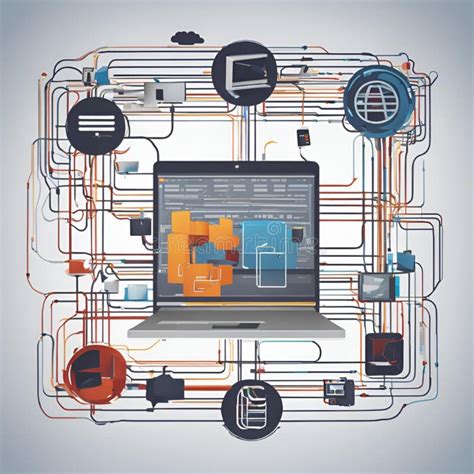Introduction

In the ever-evolving realm of technology, digital motherboards serve as the backbone of modern computing systems, seamlessly connecting various components to facilitate information exchange and orchestrate the overall functionality of a device. With their intricate network of lines and traces, motherboards empower devices to perform complex tasks, from processing data and running software to enabling communication and storage.
Understanding the Anatomy of a Digital Motherboard
Motherboards are typically constructed from high-quality materials, such as fiberglass or текстолит, and feature a layout that houses crucial components, including:
- Processor Socket: Accommodates the central processing unit (CPU), the brain of the system, responsible for executing instructions and handling data.
- Memory Slots: Allow the installation of random access memory (RAM) modules, which provide temporary storage for data and instructions being processed.
- Expansion Slots: Enable the expansion of the system’s capabilities by supporting the installation of additional components, such as graphics cards, sound cards, and network adapters.
- Storage Devices: Connect to the motherboard via interfaces such as SATA or M.2, enabling the integration of storage devices like hard disk drives (HDD) and solid-state drives (SSD).
- Input/Output (I/O) Ports: Provide connectivity for peripherals such as keyboards, mice, monitors, and external storage devices.
Key Features of Digital Motherboards
The performance and capabilities of a digital motherboard are determined by several key features:
- Form Factor: Specifies the physical dimensions and layout of the motherboard, influencing its compatibility with different computer cases. Common form factors include ATX, mATX, and ITX.
- Socket Type: Dictates the type of CPU that can be installed on the motherboard. Different socket types are designed for specific CPU generations and manufacturers.
- Chipset: Acts as the bridge between the CPU and other components, facilitating communication and managing system operations. High-end chipsets typically offer more features and support for faster data transfer speeds.
- BIOS/UEFI: Stands for Basic Input/Output System or Unified Extensible Firmware Interface. It is the firmware that initializes the hardware components and loads the operating system.
Emerging Trends in Digital Motherboard Technology
The development of digital motherboards is constantly evolving, with new innovations emerging to meet the demands of advanced computing applications. Some notable trends include:
- 5G Support: Integration of 5th-generation wireless technology into motherboards, enabling faster data transfer speeds and improved connectivity for mobile devices and IoT applications.
- Artificial Intelligence (AI) Integration: Incorporating AI algorithms into the motherboard’s chipset, enhancing system performance and optimizing resource allocation.
- Cybersecurity Enhancements: Implementation of hardware-based security features, such as encryption and intrusion detection, to protect against cyber threats.
Innovative Applications of Digital Motherboards
Beyond traditional computing applications, digital motherboards are finding their way into innovative use cases, including:
- Edge Computing: Deploying motherboards in remote locations or on devices at the edge of the network to process data and execute tasks closer to the source.
- Advanced Robotics: Integrating motherboards into robotic systems to enable autonomous navigation, decision-making, and control of mechanical functions.
- Wearable Technology: Miniaturizing motherboards for integration into wearable devices, empowering smartwatches and fitness trackers with enhanced processing capabilities.
Effective Strategies for Harnessing the Power of Digital Motherboards
To fully harness the potential of digital motherboards, consider the following strategies:
- Choose the Right Motherboard: Carefully select a motherboard that aligns with your specific system requirements and performance needs.
- Upgrade Regularly: Stay up-to-date with the latest motherboard technologies to benefit from enhanced features and improved performance.
- Optimize BIOS Settings: Fine-tune BIOS settings to maximize system performance, stability, and power efficiency.
- Maintain Your Motherboard: Regularly dust and clean the motherboard to prevent overheating and ensure optimal operation.
Tips and Tricks for Managing Digital Motherboards
Here are some useful tips and tricks to enhance your experience with digital motherboards:
- Use a Thermal Monitor: Track the temperature of your motherboard to identify potential overheating issues and take timely preventive measures.
- Check for Firmware Updates: Regularly check for and install firmware updates released by the motherboard manufacturer to address bugs and improve stability.
- Enable XMP Profiles: If your motherboard supports overclocking, consider enabling XMP (Extreme Memory Profile) to optimize RAM performance without compromising stability.
- Troubleshoot with Precision: If you encounter any issues with your motherboard, use diagnostic tools or consult technical documentation to identify and resolve the underlying cause.
Frequently Asked Questions (FAQs)
-
What is the difference between a motherboard and a CPU?
– A motherboard is the central printed circuit board that connects various components, while a CPU is the processing unit that executes instructions. -
Can I upgrade my motherboard without replacing other components?
– Yes, in most cases you can upgrade your motherboard without affecting other components, assuming the new motherboard uses the same form factor and is compatible with your existing hardware. -
How often should I update my motherboard BIOS?
– It is recommended to check for and install BIOS updates as they become available to improve system stability and enhance performance. -
What are the key factors to consider when choosing a digital motherboard?
– Consider compatibility with your desired CPU, available slots and ports, expansion capabilities, chipset features, and form factor. -
Can I use a motherboard from a different brand with my current components?
– Yes, it is possible to use a motherboard from a different brand, but compatibility and functionality may vary depending on the specific components and motherboard model. -
What is a dual-channel motherboard?
– A dual-channel motherboard allows the use of two memory modules in parallel, improving memory bandwidth and overall system performance. -
Can I overclock my motherboard?
– Overclocking allows you to increase the operating frequency of your motherboard and components, but it is not recommended unless you have a thorough understanding of the potential risks and limitations. -
What are the best practices for handling a digital motherboard?
– Handle the motherboard with care, avoid touching sensitive components, and use anti-static precautions to prevent electrostatic discharge damage.
Conclusion
Digital motherboards are at the heart of modern computing systems, enabling seamless communication, data processing, and expansion capabilities. By understanding the anatomy, key features, and innovative applications of digital motherboards, you can harness their power to enhance the performance of your devices and drive digital transformation across various industries.
